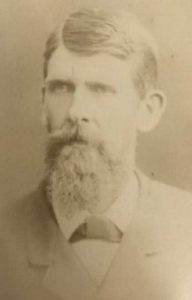Are you a Coolidge? Coolidge family members and friends will be gathering at Plymouth Notch, Vt to mark the 99th anniversary of Coolidge’s historic homestead inauguration. Below, attendee Christine Coolidge Schultze tells her Coolidge family story.
I have always been proud to be a Coolidge. My siblings and cousins were all taught the story of John and Mary Coolidge, who married in Cottingham, Cambridgeshire, England and immigrated to Watertown in the Massachusetts Bay Colony around 1630. I’m descended from three of their sons: John, Simon (from whom both Calvin Coolidge and I received our Coolidge name), and Nathaniel. My fourth great-grandfather, Joseph Coolidge (Calvin Coolidge’s distant cousin), participated in the Boston Tea Party and was killed at the battle of Lexington in 1775. There’s a large monument commemorating Joseph at the Old Burying Place at the corner of Auburn and Grove in Watertown, where an estimated fifty-eight of my ancestors are laid to rest.
When I began to do ancestry research, I joked that I was grateful to my great-grandfather, James Henry Coolidge, for finally getting out of Watertown and starting to mix up the gene pool. The reason I have so many ancestors in one cemetery is because they all stayed in Watertown and kept intermarrying. Take my fifth great-grandfather, Daniel Bond, for instance. His mother was named Hannah Coolidge, and his wife was also Hannah Coolidge because his wife was also his first cousin.
Deacon John Coolidge of Watertown, my second great-grandfather, had three sons. John Jr. stayed in Watertown and continued farming, probably on the family farm he inherited. The two younger boys, William Francis “Frank” and James Henry, like the original John Coolidge, gambled on making their fortunes in the west. Illinois became a state in 1818 and opened to farming after the 1832 victory in the Black Hawk War. Sometime between 1855 and 1860, Frank, 10 years James Henry’s senior, settled on a farm in Bloomington, Illinois. At the age of 18, James Henry likely followed his brother Frank, travelling for a week by rail to Chicago in early 1856 and then on to Bloomington. He helped break virgin prairie with a horse team and an oxen team, probably on his brother’s farm, but he didn’t stay long. By fall, he was in the booming Mississippi River town of Quincy, Illinois, working in the pork packing industry.
The following year, he was back in Watertown, where he remained until 1859 when the frontier called again, this time to Kentucky where he found work in the candle and soap business. For reasons unknown, he returned to Watertown again in 1860 and lived with his mother and father. His elder brother, John, had an interesting boarder, a Miss Ellen Frances Brown, the new schoolteacher from New Hampshire. Ellen’s paternal family had been in New Hampshire since John Brown immigrated from London in 1635, but her mother was a Dorr with strong Boston roots. They were married on January 1, 1861, days after South Carolina seceded from the Union. A daughter was soon born, and, before long, they decided to go back west to build a life.
In December of 1864, around the time Sherman’s army completed its march to the sea at Savannah, Ellen was seven months pregnant with their second child, but James Henry moved the family once again to Quincy. One can only imagine how long it took during the Civil War, still five months from its conclusion. They became vegetable farmers but soon switched crops to fruit and pickles. After the Great Chicago Fire of 1871, they packed hams, which were in great demand in the recovering city. In 1873, they sold the farm in Quincy and moved to Galesburg, Illinois, where they remained for the rest of their lives. Over the next sixteen years, they bought six different farms and eventually transitioned to dairy farming. James Henry was a scientific farmer who developed his own new strain of high-yield corn. One of his Friesian Holstein cows once held the world record for weekly milk and butter production. James Henry was the President of the Knox County Farmer’s Institute and later the President of the Illinois State Farmer’s Institute from 1901 to 1902. He helped found the Illinois State Agricultural College, now part of the University of Illinois at Urbana-Champaign.
For my branch of the family, 1881 was a banner year. My grandfather, Edgar David Coolidge, was born in Galesburg. He was the youngest son of James Henry and Ellen, number eight of their nine children. Edgar wanted to be a professional singer but decided on the fallback career of dentistry. He attended the Chicago College of Dental Surgery, which later became the Loyola University Dental School. He pioneered the field of endodontia and is remembered and revered by fellow dentists to this day. Another youngest son making good, Edgar married his piano accompanist, Laura Richelsen, the daughter of Danish immigrants. Edgar David Coolidge was followed by two more identically named men: my father, Edgar David Coolidge, Jr., and my brother, Edgar David Coolidge III, who serves as a trustee of the Calvin Coolidge Presidential Foundation.
James Henry died on May 20, 1930 at his home on Cherry Street in Galesburg. I found a lovely picture of the immediate family gathered in the front yard for his funeral. It includes seven of the nine adult children, their spouses, and some grandchildren. James Henry’s elder brother, Frank, had died thirty-five years earlier. Both Coolidge families stayed in the Midwest and are still largely there today, although further westward migration called some. I am grateful to my great-grandfather for his pioneering spirit and the legacy he left on Illinois’ agricultural and educational institutions. He was a man of his times and a man of vision—A Coolidge looking west.


Way to go Sis!
This is a great story. Thanks.
Hi distent realitives